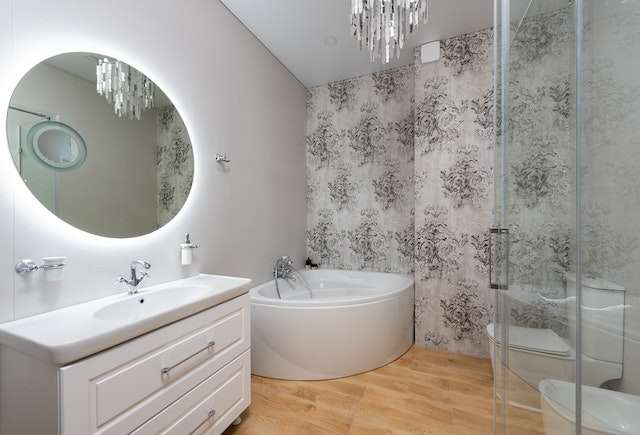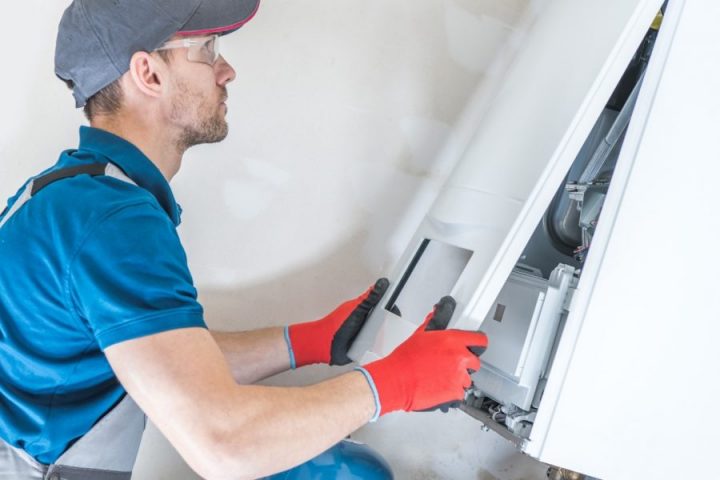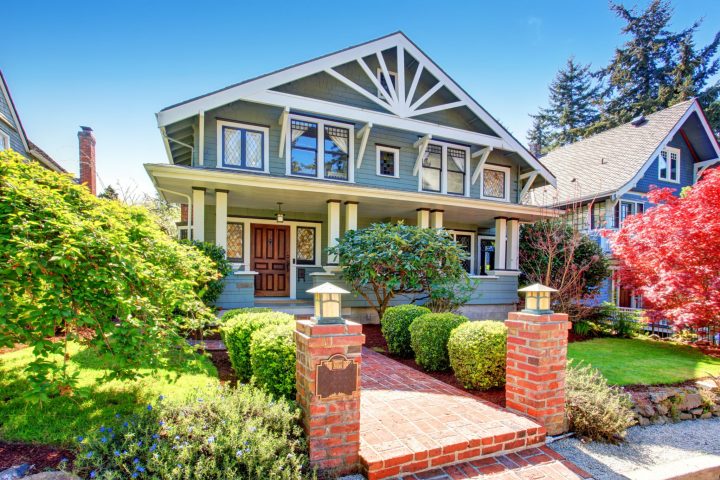A bathroom, irrespective of its size, is an essential part of any house. This space serves a practical purpose and offers solace after a long, tiring day. However, small bathrooms often pose several challenges, such as limited floor space, lack of lighting and natural light, or lack of space for general bathroom fixtures. If you also face similar issues, you might be looking for ways to create a space that is both functional and aesthetically pleasing. But before doing so, check the average cost of upgrading bathrooms in your region.
If you’re in St. Petersburg, for instance, bathroom remodeling cost ranges from 6,700 to $14,400 for small to basic renovations. However, homeowners can expect a significant return on investment, sometimes as high as 70%, making such renovations worthwhile. So, let’s delve into ways you can transform your compact bathroom from a drab space to a fab oasis.
Opt for Clear Shower Enclosures
Traditional shower curtains or frosted doors can divide a bathroom, making it feel cramped. However, clear glass enclosures allow for an unobstructed view, which makes the entire bathroom space appear unified and larger. They also let more light in, which is always a bonus in compact spaces. If privacy is a concern for you, you can also consider patterned clear glass, as it strikes a balance between style and function.
In St. Petersburg, you can add a shower enclosure to your bathroom for an average cost of $240 to $1,359, depending on the type and scale of work you want done. However, be sure to hire a reliable St. Petersburg bathroom remodeling company to get the job done professionally and timely.
Understanding Space Limitations
Every bathroom has its unique layout and constraints. Before embarking on a makeover, it’s crucial to assess the available space. Start by measuring the bathroom’s dimensions and taking note of existing fixtures. By understanding these limitations, you can plan redesigns that harness the full potential of the room. It’s also important to remember that a bathroom upgrade is not always about more additions. Sometimes, it’s about rearranging or removing to create a more open, spacious feel.
Color Selection to Open Up Space
Colors have a profound impact on how we perceive space. Light hues, for example, whites, pastels, and neutrals, can make a room feel larger and airier. On the flip side, dark shades can make it feel cozy but might also make it look smaller.
For small bathrooms, consider using a light palette for the walls and floors. If you fancy some color, you can introduce it through accessories or a feature wall. This balance ensures that the bathroom feels spacious yet stylish.
Mirrors and Reflections
Mirrors are a small bathroom’s best friend. They not only serve their functional purpose but also expand space through reflection. A well-placed mirror can double the room’s perceived size. For instance, a large mirror above the sink or a full-length mirror on an empty wall can create depth.
If you’re feeling creative, you can also add mirrored cabinets or accessories to enhance this effect.
Clever Storage Solutions
Clutter can quickly shrink a small space, which makes efficient storage compulsory. Floating vanities are a popular choice as they offer storage without consuming floor space. On the other hand, under-sink cabinets can hide away toiletries, while over-the-toilet shelves use vertical space wisely. Another innovative idea is recessed wall storage, which includes creating niches in the walls to store essentials. It’s a neat way to keep items accessible yet out of sight.
Multi-Function Fixtures
In small bathrooms, every inch counts. So, using fixtures that serve multiple purposes can save space. One such example is a combo shower bath unit. This design offers both a shower and a bathtub in the same space. For sinks, you can consider wall-mounted options. These sinks are attached directly to the wall, which helps free up floor space and create a cleaner look. Another useful fixture is a compact toilet. These toilets are designed to fit snugly into tight spaces while offering the same functionality as larger models.
Declutter and Simplify
A crowded bathroom can feel even smaller than it is. Thus, decluttering is essential for such spaces. Begin by assessing what you truly need in your bathroom. We often keep items that are rarely used. So, it is necessary to get rid of extra items and adopt a minimalist approach.
However, this doesn’t mean your space has to be bare. Instead, it’s about selective choices. Store the essentials in your bathroom and keep the counter free from unnecessary items. This way, you may achieve a neat, spacious feel. Lastly, it’s not simply about decluttering once; regular checks ensure that the space remains clean and tidy.
Vertical Design Principles
One way to make a small space feel bigger is to draw the eye upward, and this can be achieved through vertical design. Start by using tall, slender storage units or shelves. They use the height of the room without eating up much floor space.
Wall decorations or tiles that run vertically can also give the illusion of a taller room. Even small details, like vertical towel hangers or long, slim vases, can contribute to this effect. Such changes help utilize often-overlooked vertical space while maximizing both functionality and aesthetics.
Proper Lighting Techniques
Light plays a pivotal role in how we perceive space. In small bathrooms, good lighting can make a world of difference. Start by ensuring natural light flows in, if possible. Next, focus on artificial lighting. Layered lighting can be your ally in small spaces. It means using a combination of ambient (general), task, and accent lighting.
Ambient lights set the overall tone. Task lights focus on areas like the whereas accent lights, though not always necessary in a small bathroom, can highlight design features. You can also consider fixtures like sconces or under-cabinet lights.
Incorporating Natural Elements
Nature has a way of making spaces feel refreshing and open. Introducing it into your bathroom can have a similar effect. Start with plants. Several plants thrive in bathroom conditions as they love humidity and rely less on sunlight. Plants like ferns or spider plants can be great choices. Apart from the greenery, think of materials. Stone countertops or wooden shelves can bring in that touch of nature. They don’t only look good but can make the bathroom feel serene and spacious as well.
Conclusion
In bathrooms, limited space doesn’t mean limited style or functionality. As we’ve explored above, with thoughtful design choices and smart solutions, even the tiniest of bathrooms can be transformed into a functional and stylish spa-like retreat. The key lies in understanding the space, optimizing what you have, and making decisions that combine practicality with aesthetics. So, as you contemplate a bathroom makeover, remember that size isn’t a barrier. With the right approach, any small bathroom can go from drab to absolutely fab.







